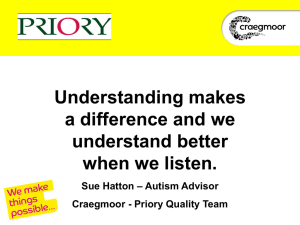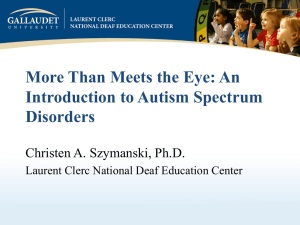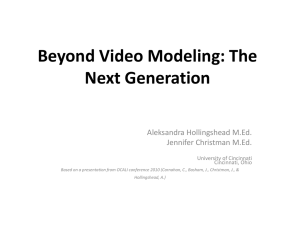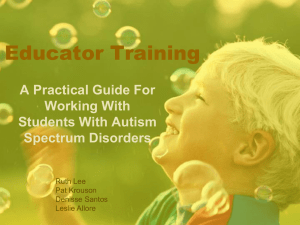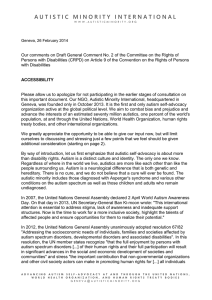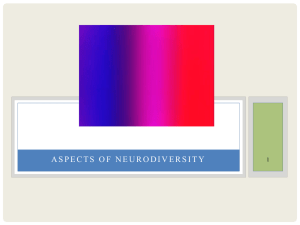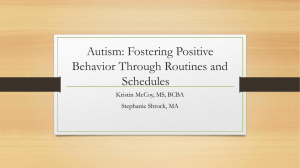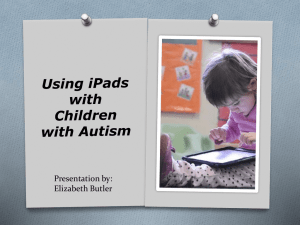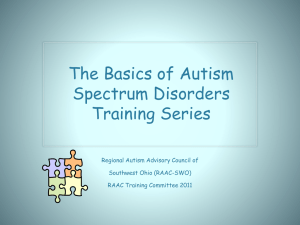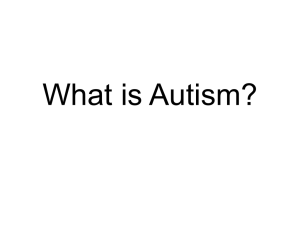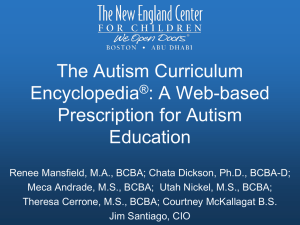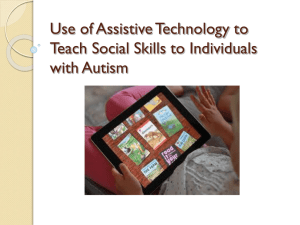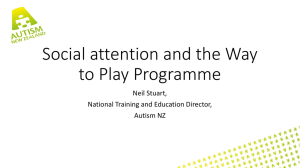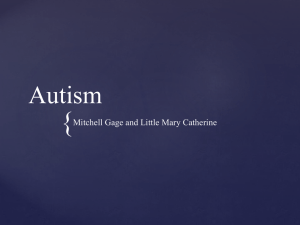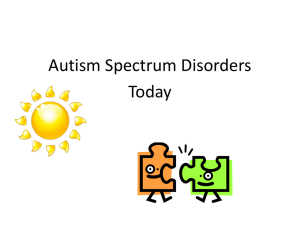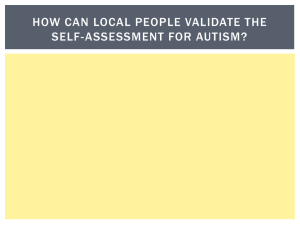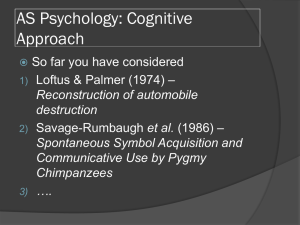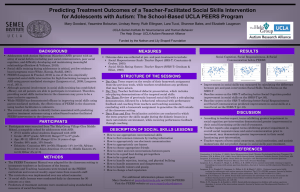Autism, Narrative and representation
advertisement
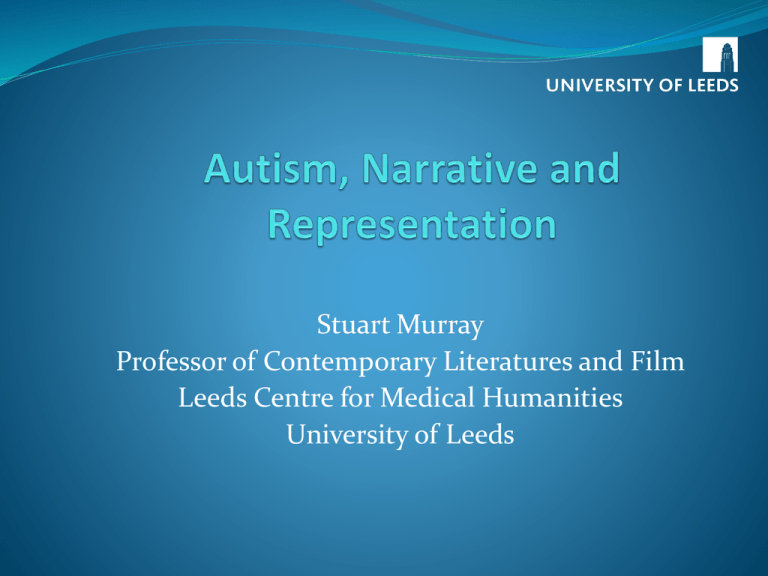
Stuart Murray Professor of Contemporary Literatures and Film Leeds Centre for Medical Humanities University of Leeds The determination of diagnoses and the problem of overlapping diagnostic criteria bedevil researchers and clinicians. Worse, the etiology of these diverse but purportedly related disorders remain unclear, leaving researchers unable to determine whether all of these disorders share a common etiology… or whether the phrase “autistic spectrum disorders” is merely a nominal category, a shorthand indicator, that refers to nothing real in the sense of a biologically unified and cohesive disorder. A simple answer to what autism is, that is, what constitutes its essence, is unattainable. Majia Holmer Nadesan, Constructing Autism: Unravelling the ‘truth’ and understanding the social (New York and London: Routledge, 2005), p. 14. I argue that autism is best understood as a social and cultural construction, that the particular aspects of autism’s construction are complex and multilayered, and that people classified autistics as well as those around them, including the autism field, have choices to make concerning which constructions to privilege. Autism is not a given condition or set of realities – at least it is not “given” or “real” on its own. Rather autism is and will be, in part, what any of us make it. Douglas Biklen, Autism and the Myth of the Person Alone (New York: NYU Press, 2005), p.65 Mirella Dapretto et al., ‘Understanding emotions in others: mirror neuron dysfunction in children with autism spectrum disorders’. Nature Neuroscience 9, 28 - 30 (2005) (2) qualitative impairments in communication as manifested by at least one of the following: (a) delay in, or total lack of, the development of spoken language (not accompanied by an attempt to compensate through alternative modes of communication such as gesture or mime) (b) in individuals with adequate speech, marked impairment in the ability to initiate or sustain a conversation with others (c) stereotyped and repetitive use of language or idiosyncratic language (d) lack of varied, spontaneous make-believe play or social imitative play appropriate to developmental level Diagnostic and Statistical Manual of Mental Disorders, Fourth Edition, Text Revision, (Copyright 2000). American Psychiatric Association. A high AQ score alone is not a reason to be referred for a diagnosis. In addition, there has to be evidence that the person is ‘suffering’ in some way (e.g. they are being bullied, or are becoming depressed, or have high levels of anxiety, or are not fulfilling their academic or occupational potential) Simon Baron-Cohen, Autism and Asperger Syndrome (The Facts series, OUP, 2008), p. 29. The assumption that autistics are cognitively impaired pervades the popular and scientific literature. Autistics who are considered minimally verbal or nonverbal… are considered the most cognitively impaired; it is commonplace to refer to such individuals as “low functioning.” And although it has become impolite to refer to autistics with exceptional abilities as “idiot savants,” superior performance by autistics is frequently considered to be a side effect of abnormal neuroanatomical function, rather than a reflection of genuine human intelligence. Michelle Dawson, Isabelle Soulières, Morton Ann Gernsbacher and Laurent Mottron, “The Level and Nature of Autistic Intelligence,” Psychological Science, 18:8 (2007), p.657 A vulnerable Muslin convert was persuaded online by shadowy Pakistan-based extremists into trying to carry out a suicide bomb attack on a busy restaurant. Nicky Reilly, 22, who has Asperger’s syndrome and a mental age of 10, was directed how to build bombs filled with hundreds of nails, which he attempted to detonate at the Giraffe restaurant in Exeter in May. The devices went off prematurely, injuring only him… Reilly admitted yesterday researching how to make improvised explosive devices, investigating potential targets and acquiring components for them. His mother insisted, however, that her son would never have been able to make the explosives himself. Kim Reilly said: “He would not be able to make the bomb. He would have had to have some instruction or guidance from someone. I am absolutely convinced about that. There is no way Nicky was capable to do that.” Officers said the failed attack was a terrifying echo of the tactics of extremists in Iraq who use the mentally or physically disabled to carry out attacks. Neighbours said that Reilly was a recluse who spent most of his time online in his darkened bedroom. The influence of extremist websites and jihadists is clear in a suicide note left at Reilly's home. Adam Fresco, “Bomber was brainwashed over the internet,” The Times, October 16, 2008, Home section. See http://www.timesonline.co.uk/tol/news/uk/crime/article4951616.ece


